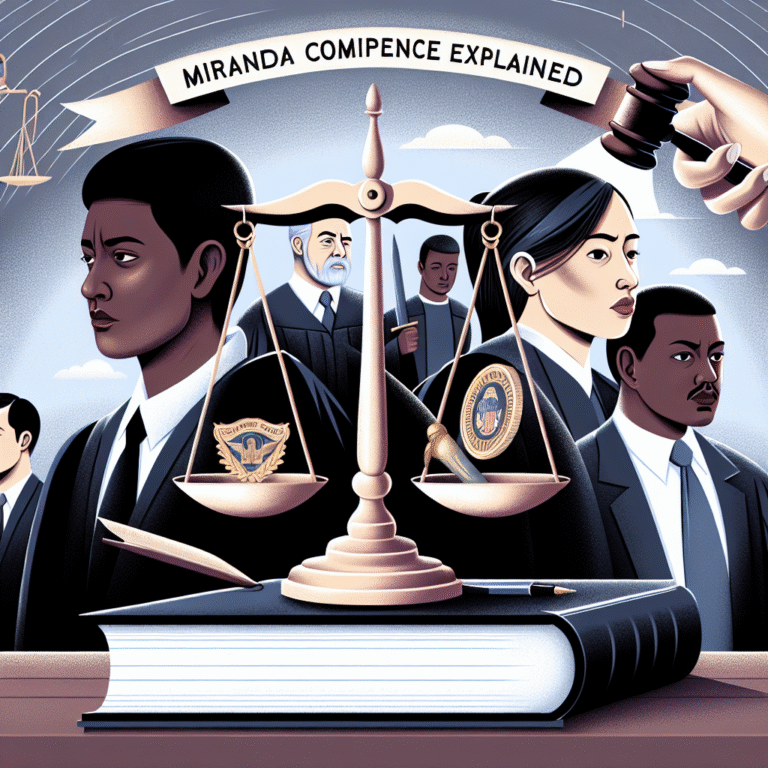
Introduction
In a world where first impressions matter, lineup procedures stand as a critical component, especially in fields such as law enforcement, event management, and casting. The way organizations and agencies structure their lineups can make the difference between clarity and confusion, success and failure. This comprehensive guide, Lineup Procedures Unveiled: A Deep Dive into Best Practices, reveals tried-and-true methodologies that lead to effective selections and memorable experiences.
Whether you are tasked with conducting a lineup for a police identification process or organizing a casting call, understanding the nuances of lineup procedures is essential. Consequently, implementing the best practices discussed in this article can enhance outcomes, instill fairness, and bolster public trust.
Understanding Lineup Procedures
What Are Lineup Procedures?
At its core, lineup procedures are systematic methodologies employed to present individuals, objects, or options for evaluation—most often in criminal justice or event settings. Lineups can significantly affect the decision-making processes of witnesses, clients, or audiences.
Importance of Lineup Procedures
- Credibility: Properly executed lineup procedures enhance confidence in outcomes.
- Fairness: Reducing bias is paramount, particularly in criminal cases.
- Efficiency: Streamlined processes save time and resources.
Best Practices in Lineup Procedures
1. Structure of the Lineup
Case Study: The National Institute of Justice Study
A study conducted by the National Institute of Justice highlighting lineup structure demonstrated how sequential lineups produced more accurate identifications compared to simultaneous options. This finding underscores the importance of using structured lineups tailored to the setting.
Best Practice:
- Adopt either simultaneous or sequential lineups based on context and audience. For instance, law enforcement agencies often favor sequential lineups in order to decrease misidentification.
| Type | Description | Pros | Cons |
|---|---|---|---|
| Simultaneous | All subjects shown at once | Quick identification | Higher misidentification rates |
| Sequential | Subjects shown one at a time | Lower misidentification rates | Longer process |
2. Clear Instructions
One of the most critical aspects of successful lineup procedures involves providing clear and concise instructions to participants. This guarantees that individuals understand the purpose and process, leading to more reliable outcomes.
Best Practice:
- Create a standardized script for instructions tailored for your audience. This minimizes variability and potential confusion.
3. Selecting the Right Participants
Case Study: Event Management Insights
An analysis of successful casting calls for Broadway productions revealed that diverse participant selection enhanced the final lineup’s quality. Access to various backgrounds led to innovative outcomes.
Best Practice:
- Strive for diversity in participant selection. This not only broadens the appeal but also enriches the overall quality of the final lineup.
Psychological Considerations
1. Reducing Bias
In criminal lineups, it is crucial to minimize witness bias. Research shows that witness confidence is often mistaken for accuracy, leading to wrongful convictions.
Best Practice:
- Implement double-blind procedures where both the administrator and the witness are unaware of the suspect’s identity. This is fundamental to lineups, unveiling fairness and reliability.
2. Stress and Anxiety Management
Participants may experience anxiety or stress during the lineup. A calm environment can significantly improve the accuracy of decisions.
Best Practice:
- Set the stage: A comfortable environment can lead to better identification outcomes. Offer assurances and take time to prepare participants.
Technical Considerations
1. Technology in Lineups
Technological advancements have transformed lineup procedures in recent years. Digital formats can streamline processes and offer more accurate representations.
Best Practice:
- Explore digital lineup systems that allow for better management and analysis of data gathered during the identification process.
2. Documentation
Accurate documentation of lineup procedures is vital for accountability. This transparency can protect against scrutiny and validate the process if challenged.
Best Practice:
- Maintain comprehensive records of each lineup. This includes participant lists, instructions provided, and outcomes.
| Documentation | Purpose |
|---|---|
| Recording Outcomes | To track accuracy and potential misidentifications |
| Participant Feedback | To gather data for future improvements |
Conclusion
In summary, effective lineup procedures are indispensable across various fields, enhancing credibility, fairness, and efficiency. From understanding the structure of lineups to adopting technological advancements, the best practices discussed in Lineup Procedures Unveiled: A Deep Dive into Best Practices are not mere recommendations; they are essential elements that contribute to successful outcomes.
As you implement these strategies, remember that the key lies in a meticulous approach. Equipping yourself with the right tools and knowledge will not only lead to better results but will also inspire trust within your audience or community.
FAQs Section
1. What are lineup procedures?
Lineup procedures are structured methods for presenting individuals or options for evaluation, primarily used in law enforcement and event management.
2. Why is reducing bias crucial in lineups?
Reducing bias is vital for ensuring fairness and accuracy, particularly in criminal cases to avoid wrongful convictions.
3. How can I make lineup procedures more efficient?
Implementing standardized instructions and documenting each step can enhance both efficiency and transparency.
4. What role does technology play in lineup procedures?
Technology can streamline data management and improve accuracy through digital formats for lineups.
5. How important is participant diversity in lineups?
Diversity enriches lineups, bringing a range of perspectives and enhancing the overall quality of the results.
By embracing the insights laid out in Lineup Procedures Unveiled: A Deep Dive into Best Practices, organizations, agencies, and individuals can turn their lineup processes into systematically effective tools that command respect and trust in their fields.

















